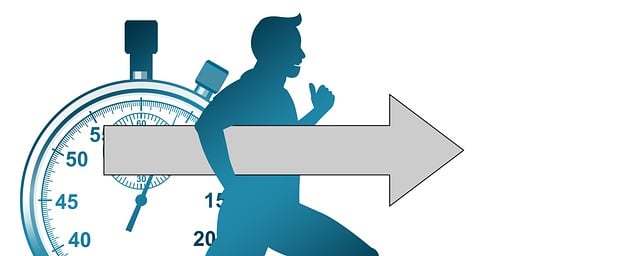Assessing capital needs for equipment is vital for strategic business planning. It involves a multi-step process:
1. Identify Key Areas: Recognize sectors like production, R&D, or IT that demand investment.
2. Equipment Audit: Thoroughly review existing assets' age, condition, functionality, and remaining lifespan.
3. Financial Analysis: Assess company financial health through cash flow statements and balance sheets, explore financing options, and consider interest rates, terms, and collateral.
4. Forward-Thinking: Analyze historical data and market trends to predict future equipment needs and costs over 3-5 years.
5. Strategic Planning: Set goals, identify investment areas, evaluate risks and returns, and align with overall business strategy while considering current equipment conditions, technological advancements, and regulatory changes.
Assessing capital needs for equipment is a critical step in ensuring your business’s growth and competitiveness. This comprehensive guide walks you through essential steps, from understanding your business requirements and conducting a thorough equipment audit to evaluating current assets and financing options. By projecting future needs and costs, you can develop a strategic plan that aligns with your goals, optimizing your capital investment for maximum impact. Discover how these steps can transform your business’s trajectory.
- Understand Your Business Requirements and Goals
- Conduct a Comprehensive Equipment Audit
- Evaluate Current Assets and Financing Options
- Calculate Future Needs and Projected Costs
- Develop a Strategic Plan for Capital Investment
Understand Your Business Requirements and Goals

Understanding your business requirements and goals is a fundamental step in accurately assessing capital needs for equipment. This involves evaluating both current operational needs and future growth aspirations. Begin by identifying key areas within your organization that require investment, such as production, research & development, or IT infrastructure. Next, analyze existing equipment to determine its capacity, efficiency, and remaining lifespan. This assessment will reveal if upgrades, replacements, or entirely new systems are necessary to meet current and projected demands.
Additionally, aligning equipment investments with strategic business goals is crucial. Consider how proposed purchases can drive innovation, enhance productivity, or improve operational effectiveness. By linking capital needs to specific objectives, you can justify investment decisions and ensure that acquired assets directly contribute to the overall success and competitiveness of your organization.
Conduct a Comprehensive Equipment Audit

Conducting a comprehensive equipment audit is a critical step in accurately assessing your organization’s capital needs for equipment. This involves a detailed review of all current assets, including their age, condition, functionality, and remaining useful life. By meticulously documenting each piece of equipment, you gain valuable insights into its value, performance, and potential replacement requirements.
During the audit, consider factors such as maintenance history, repair costs, operational efficiency, and regulatory compliance. This data will help identify underperforming or obsolete equipment that may require significant investments to maintain or replace. An in-depth analysis ensures that your assessment aligns with reality, enabling you to make informed decisions about capital allocation for equipment upgrades or replacements, thereby optimizing long-term operational effectiveness and financial sustainability.
Evaluate Current Assets and Financing Options

When assessing capital needs for equipment, a thorough evaluation of current assets is paramount. Begin by scrutinizing your existing machinery and technology. Identify which items are still in good working condition, their age, and residual value. This step provides a baseline for understanding what assets need replacement or upgrading. It’s also crucial to consider the financial health of your organization. Analyze cash flow statements and balance sheets to gauge liquidity and accessibility to funds. Understanding your company’s financial flexibility is essential when deciding on financing options.
Additionally, explore various financing avenues available for equipment acquisition. Traditional choices include bank loans, lines of credit, or leasing agreements. Assess interest rates, repayment terms, and any collateral requirements. Modern options like equipment financing specialists, asset-based lending, or even peer-to-peer lending platforms can also be considered. Evaluating these options helps in making informed decisions that align with your organization’s financial strategy and assessment of capital needs for equipment.
Calculate Future Needs and Projected Costs

When assessing capital needs for equipment, calculating future needs and projected costs is a crucial step. This involves forecasting your business’s growth trajectory and identifying upcoming equipment replacements or upgrades. Start by analyzing historical data to understand equipment lifespan and performance trends. Then, factor in market trends, technological advancements, and industry forecasts to predict future requirements.
Use these insights to estimate the cost of new equipment, maintenance, and operational expenses over the next 3-5 years. Consider both short-term and long-term financial goals, incorporating variables like inflation rates and potential technology obsolescence. This comprehensive approach ensures that your capital allocation aligns with your business’s evolving needs, enabling informed decision-making for effective assessing capital needs.
Develop a Strategic Plan for Capital Investment

When assessing capital needs for equipment, developing a strategic plan is essential. This involves defining your organization’s short-term and long-term goals, identifying key areas that require investment, and evaluating potential risks and returns. A well-crafted strategic plan should align with your overall business strategy, ensuring that capital investments drive operational efficiency, increase productivity, and support growth objectives.
Start by conducting a thorough analysis of current equipment and processes. Document their condition, age, maintenance costs, and performance metrics. This baseline data will help you determine which assets require replacement or upgrading and the extent of needed investment. Additionally, consider market trends, technological advancements, and regulatory changes that might impact your equipment needs over time. By integrating these factors into your strategic plan, you can make informed decisions about capital allocation, ensuring your organization stays competitive and sustainable in the face of evolving demands.






